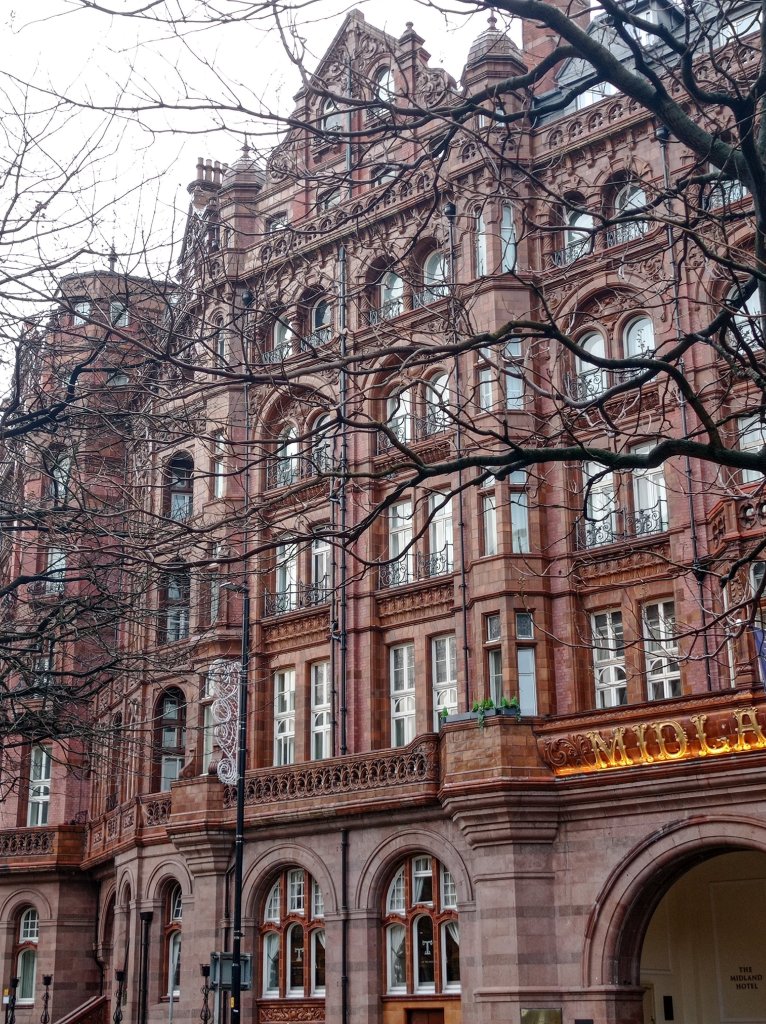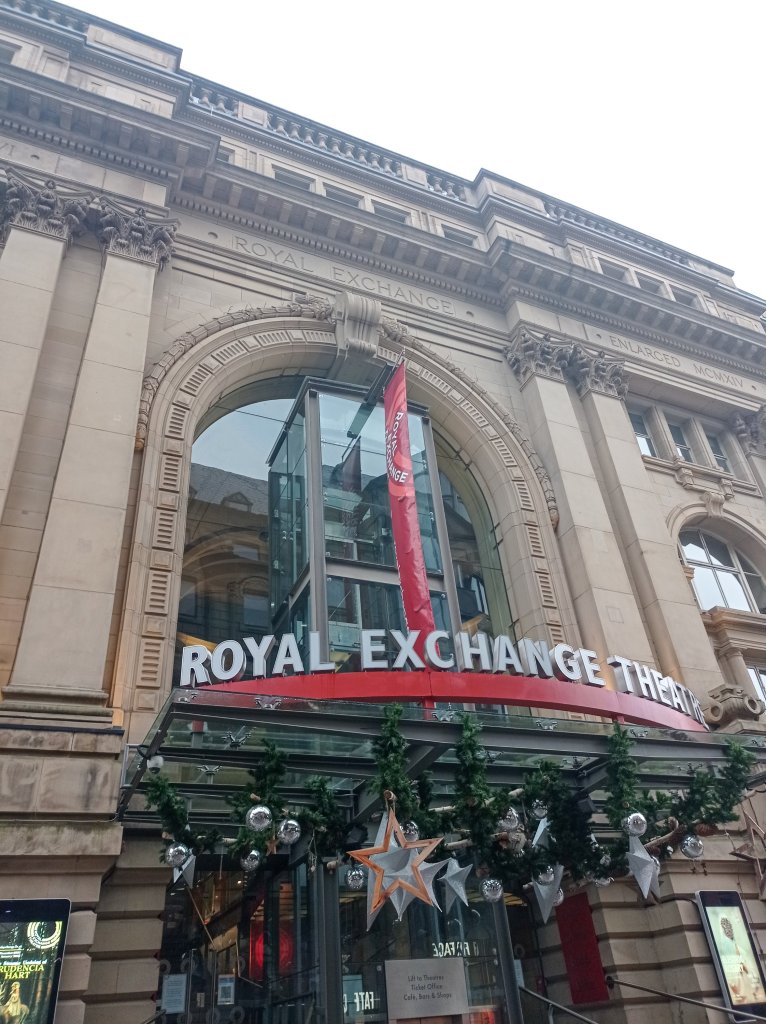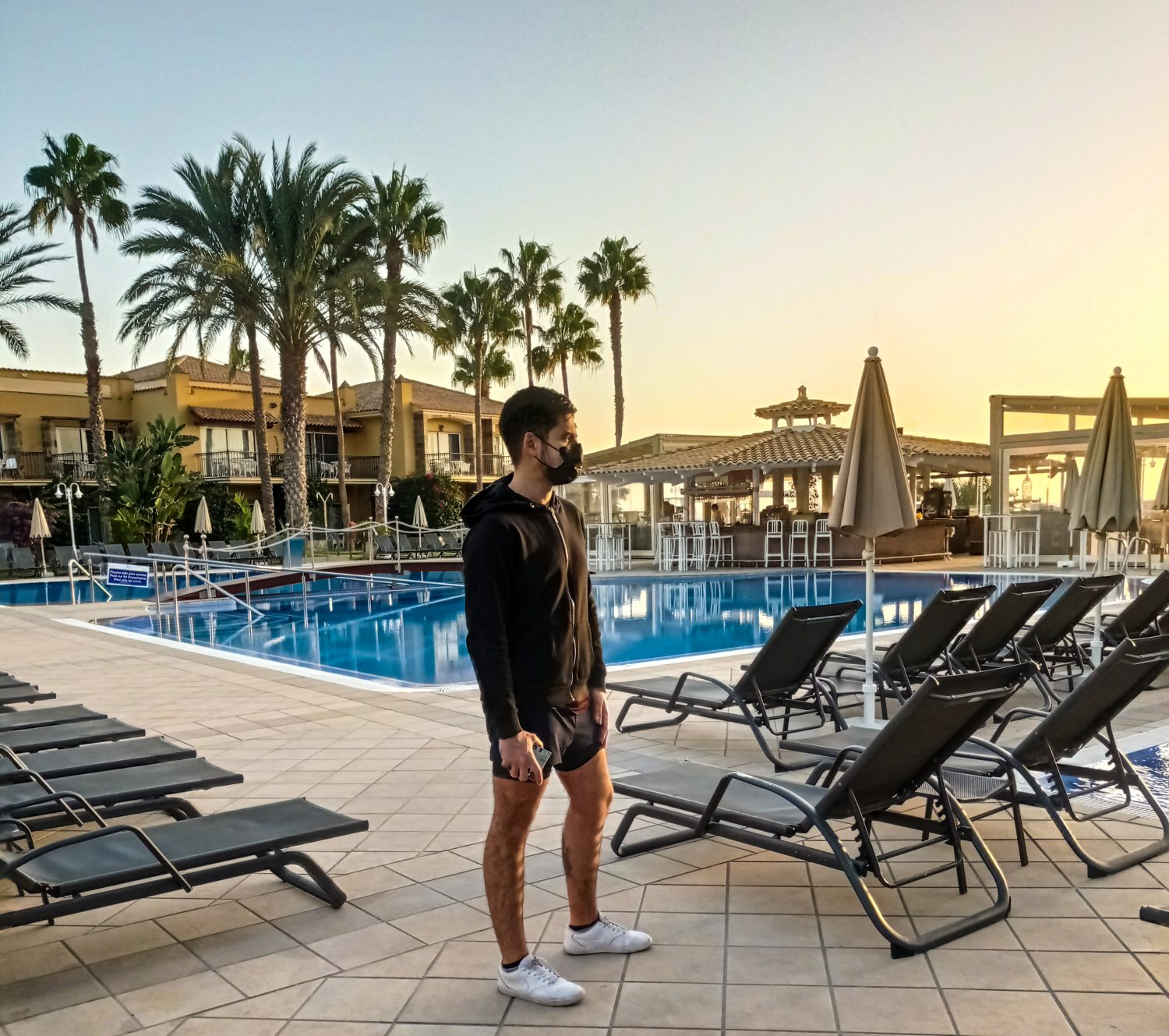From a Roman fort to one of the most industrialised cities in the world. My first time in Manchester made me realize that the city is way more than its football team.
I have put together some of the places that I visited during the day I spent in the city. By learning about them, you will be able to travel back to Roman times, the Middle Age, the WWII period, and the modern era… without even leaving Manchester.
Alan Turing’s legacy
My tour through Manchester started right where one of its most important citizens (sadly, not acknowledged properly) stands in the form of a statue. I am talking about Alan Turing, who should be better known as “the father of modern computer science”.
Turing had a massive impact over millions of lives during World War II. At Bletchley Park, he joined a team tasked to crack the Nazis’ secret communication code (Enigma), which they eventually did with the help of Polish intelligence.

This massive success is estimated to have shortened the war by 2 to 4 years, saving around 14 million human lives. After WWII ended, Turing moved to Manchester and (again) joined a different team which had another overwhelming and ambitious assignment… To create the first computer ever.
Turing was openly gay, and sadly this brought enormous trouble to his life as until 1967, homosexuality was considered an offence within the UK’s law. However, Turing would not live that much to see things change.
After being caught on a homosexual relationship, he was given two choices by the police. To be jailed for up to 2 years or to go through chemical castration. Turing chose the latter. Due to the hormones that he was taking as part of this monstrous treatment, his concentration and his work suffered enormously.
Finally, in 1954, Turing was found dead in his apartment with a biten apple by his side (which is represented in his statue right in Manchester’s heart). Lots of legends have emerged from this episode. One of them defends that the current Apple’s logo was inspired by Turing’s death.
It was not until 2010 (56 years after his death and 43 since homosexuality stopped being considered a crime) that Alan Turing was officially pardoned by Queen Elizabeth.
I must add that Turin was an extraordinary and dynamic man based on some of his qualities. He almost competed in the Olympic Games as a long-distance runner. Also, he was quite fond of his favourite tea cup. So much that he would chain it to a radiator and padlock it.
Vimto Monument
The story of this non-alcoholic drink starts with a man named John Nichols. He was a devoted Quaker who wanted to invent an alternative to alcohol. Nickels lived on the number 19 of Granby Row, the street where nowadays the Vimto Monument stands proudly in recognition of its creator.
This drink sells 6 bottles every second, and it is quite popular outside the UK (especially in Muslim countries from the Middle East and Africa). Also, its sells usually skyrocket during the Ramadan period.
Back in 1992, the University of Manchester commissioned a monument for this drink. You can appreciate its design below.

Music & Film
Manchester has made these two arts part of the city’s character and history. Regarding the music scene, Manchester saw the creation of a legendary record label named Factory Records. The creator of the company, T. Wilson, wrote a letter using his own blood to state that “they (Factory Records) do not own the music, musicians do”. As you will discover in the next paragraphs, this declaration brought hell to Mr Wilson.
In 1982, he opened a nightclub called Hacienda. Eventually, the venue was known because of the consumption of drugs and the shootings between gangs that happened inside the club.

Years later, in 1997, Hacienda was declared bankrupt. This was a hard pill to swallow for Wilson, but not the only one. His letter left him without any rights to claim music’s royalties, as he had declared that everything was for the musicians.
Also, Manchester has been a prolific spot to film movies and TV series. Productions such as Spiderman, Captain America, or The Crown were partially filmed in the city. As seen in the picture, the fire escapes outside some apartments make Manchester look like New York through the lens of the cameras.
Gay Village
This city’s area cannot be understood without talking about The New Union Hotel. This property is believed to be the second oldest surviving gay pub in the UK. Back in the day, it was called The Union Hotel (now you will learn why).
As I said when talking about Mr Alan Turing, homosexuality was illegal in the UK until 1967. Police officers used to raid and make arrests in The Union Hotel. Nearby, in Chorlton Street, it used to be a place packed with prostitutes, who were usually arrested too.
The hotel’s landlord came up with an innovative idea. He would brought the prostitutes inside The Union Hotel to pretend that they were dancing with the gay men who frequented the venue when police raids took place.

Eventually, the landlord was arrested and when released from prison, he just changed the hotel’s name to The New Union Hotel. Under its new name, the place was booming every night.
Manchester was the first European city to have a publicly founded gay community center. Also, the city’s town hall was the first one in Europe to wave the Rainbow Flag. Manchester’s role in fighting for the rights of the LGTBI+ community was stressed through the Antisection 28 march demonstration.
On the other hand, James Anderson, (former chief of police in Manchester who used to raid The New Union Hotel) was the city’s dark side against homosexuality. His job consisted of looking for “men who where provocatively dancing with each other”, which according to an old Victorian law was considered a criminal offence.
Mr Anderson was an evangelical Christian who defended that God spoke through him. He also said that AIDS were a self-inflicted punishment. Once, his men did beat up 2 gay men after chaining them to a street mailbox.
Chinatown
Manchester’s Chinatown is the second largest one in the UK and the third one in Europe. The imperial arch that you see in the picture below was a gift from the Chinese city of Wuhan (yes, where COVID was first reported), which is Manchester’s twin city.

Many streets of this neighborhood are named after the original residents that lived there in the Georgian era. It was in Chinatown where sociocultural associations such as the Athenian Society, the Literature and Philosophical Society, and the Art Gallery were established.
All of this put Manchester right on the map for top minds such as George Dalton or our friend Alan Turing, who studied and worked in the city.
A Secret Building
The construction finished in 1954, with the shelter being 100 feet deep into the ground. Under the city, there is a bunker with capacity for 40 people, 6 months worth of food, a well to get drinking water, a bar, and 2 tunnels that can be used to escape from the city.
The story of this infrastructure began in 1949, when the US government gave 4 million pounds to Manchester City Council. This money was provided so the city could build a nuclear bomb shelter.

But, the life of the building was relatively short. In 1967, just 13 years after being built, the shelter was declared useless because of the development of the new (and more deadly) H Bomb.
After this, the shelter was turned into the so-called Guardian Phone Exchange, a net of tunnels filled with telecommunications wires.
Regardless of its use, people from Manchester did not know what this building really was until 2004. Back then, a homeless man managed to sneak inside the former bomb shelter where he lighted a cigarette that caused a fire.
The flames spread throughout one of the tunnels, which cut half of Manchester’s telecommunications and part of the Internet in Sweden. To conclude with this story, I must add that there is a replica of this building in the city of York, and it has capacity for 40 people too…
The Midland Hotel
This establishment was opened in 1903, and Adolf Hitler liked it so much that it is believed that he gave instructions not to bomb it during Manchester’s Blitz. The Nazi leader wanted to use this majestic building as his Administration Headquarters in North England after he had conquered the country, which he never did.

There is a curious monument under one of the second arch’s of the hotel’s façade which represents two men shaking hands. These gentlemen are the two founders of the company Rolls-Royce, who happened to meet for the first time at The Midland Hotel.
Manchester Central
Until 1969, this place used to be a train station before becoming a music venue. Nowadays, the building is used as a conference center.
Nearby Manchester Central stands the Bridgewater Hall, a venue for classical music that is home to the Holly Symphony Orchestra (the oldest one in the UK).
Next to where these two buildings stand today, something terrible happened back in 1819. On 16th August, around 60000 people gathered here in a massive peaceful protest to promote democracy and rights to vote.
The city’s authorities were worried about a revolution taking place in Manchester. In order to disperse the masses, a voluntary police force called The Britons Protection was summoned, and its members were mostly war veterans from Waterloo.
When these forces stormed the demonstration, 18 people where killed and over 700 were injured. This was known as The Peterloo Massacre.
In 2019, a monument was erected in this square to commemorate the 200th anniversary of the massacre. The names of the victims are engraved on it and there is a drawing of compass that points to other worldwide places were similar incidents happened.
The Free Trade Hall
This building, bombed during WWII, was redesigned into a music venue where stars such as Louis Armstrong or the Sex Pistols performed.

Manchester Town Hall
The city’s town hall is currently closed, yet it will be reopened in 2024. One of its main features stands at the top of the building’s tower. Right there, a golden cotton ball stands over the city.
There are a lot of personal stories connected with this construction. The bell inside the town hall is called The Great Abel after Abel Heywood, former Manchester mayor who opened the building, whose initials are engraved on it.
Before starting his political career, Mr Heywood was sent to prison for refusing to pay a tax on written texts that was introduced to stop the spread of revolution after the Peterloo Massacre.
Queen Victoria was supposed to attend the inauguration of Manchester’s Town Hall. However, she refused to share the stage with Mr Heywood because of his political ideas and his working-class style.
St Anne’s Church
Located in St Anne’s square, the church’s clock tower is the exact central point of the city. By one of the building’s sides, a particular statues represents both homelessness and Jesus Christ.
This statue was supposed to be outside the House of Parliament in London but, somehow, it ended up being put in Manchester…

The Royal Exchange
Nowadays it is a theatre with 755 seats that was constructed in 1976. Before that, it used to be the Exchange of Trading which ended up closing on 31st December 1968.
This building has a particular connection with the United States and especially one of their presidents, Abraham Lincoln.

In 1861, a civil war started in America between the Union States from the North (lead by Lincoln) and the Confederate States from the south. The latter were proslavery and their economies were heavily dependent on slaves picking cotton.
Back in the 19th century, America was the biggest cotton’s export in the world, with Manchester being the top import worldwide. For around 120 years, this trading relationship kept slavery going on.
However, times changed. A group of merchants decided that Manchester would not export any more cotton picked by slaves. Instead, the city would trade with Egypt or India which made these transactions more expensive.
Eventually, Lincoln won the war and wrote a letter to the city of Manchester acknowledging its decision to stop this way of trading based on slavery. He also sent a gift to the city, a statue of himself which was put in what is known as Lincoln Square.
Exchange Square
This place witnessed one of the most shocking moments in the history of Manchester. In June 1996, a bomb was planted in the city centre by a member of the IRA.
Luckily, no one died. Manchester Police managed to evacuate 80000 people before the bomb went on. The explosion destroyed everything in a quarter of a mile except for a red post box that still stands today. Also, around 200 businesses collapsed.
However, this disaster brought light to the city. Exchange Square was completely rebuilt thanks to private local investment and funding from the EU. And for many citizens, this started a rebirth process for Manchester.
Do not miss my next travel here.
